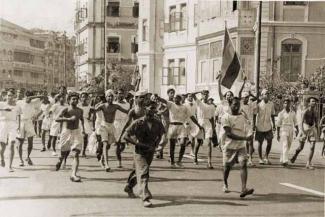Seventy Six years ago, on February 18, 1946 around more 1000 sailors or “ratings” of the then Royal Indian Navy in Bombay declared a strike against the inhuman conditions. Next day morning, the rebellion spread to shore establishments and ships in Karachi, Madras, Calcutta, Mandapam, Visakhapatnam, and the Andaman Islands, soon taking the shape of a mutiny against the British Empire. During the event, seventy eight out of a total of 88 ships mutinied. The demands included, an end to the mistreatment of Indian sailors, release of all Indian political prisoners and personnel of Indian National Army (INA). Thousands of more sailors joined the action as workers, students and the toiling masses organised strikes and demonstrations in solidarity with the sailors. In Madras, Calcutta, Jubbulpore and Poona, soldiers in the British Indian Army ignored and defied orders from British superiors. British authorities launched massive repression killing hundreds of sailors and civilians.
A month before the naval mutiny, in January 1946, Indian airmen deployed in more than 60 Royal Indian Air Force bases, including Kanpur, Karachi, Ceylon (now Sri Lanka) and Singapore organised strike action as the country was witnessing a growing anger against the British rule and its repression on independence movement.
The naval mutiny, along with several incidents of strikes and mutiny level actions in various branches of British Indian Armed Forces since 1943, played a crucial role in ending the British colonial rule in India.









